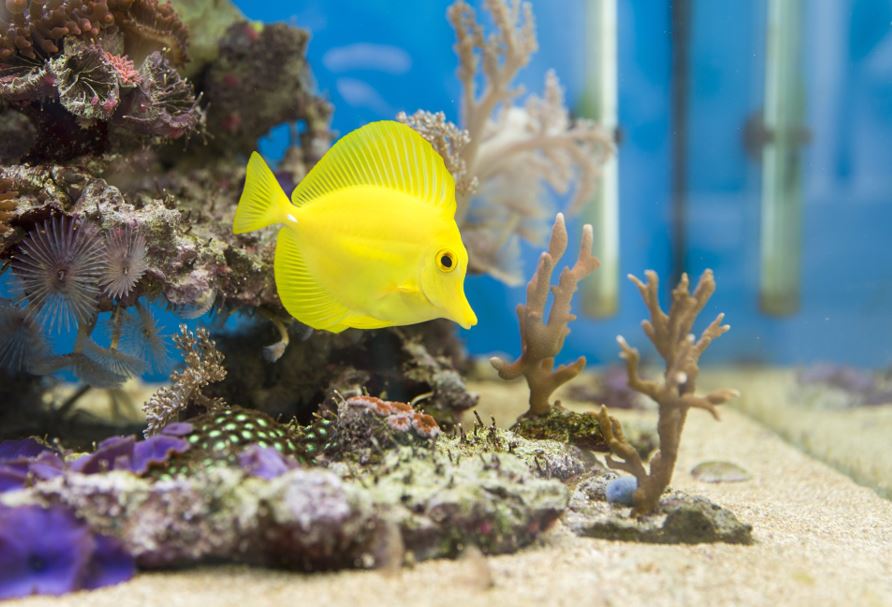
Did you know that there are over 33,000 distinct fish species in the world?
As you venture into aquascaping, you have plenty of choices when it comes to the decorations in your tank. But it can still be hard to know where to start.
Is this your first time setting up an aquarium? If so, you may be wondering about basic aquascaping ideas. Luckily, you’ve come to the right place for help.
In this guide, we’ll be going over some basic aquascaping ideas to help you get started. Keep reading to learn more!
1. Start with the Right Equipment
Before you begin designing your aquascape, it’s essential to gather the necessary equipment. This will ensure a successful and healthy aquatic environment. Here’s a list of some basic equipment you’ll need:
Aquarium
Choose fish tank sizes that suit your space and budget. A larger aquarium provides more room for creativity and a more stable environment for your aquatic life. But beginners can start with a smaller tank to get the hang of aquascaping.
Substrate
Select an appropriate substrate for your aquarium. Substrate not only provides a foundation for your plants but also aids in nutrient absorption and root anchoring. Common substrates include sand, gravel, and specialized plant substrates.
Lighting
Invest in suitable aquarium lighting to support the growth of aquatic plants. The type and intensity of light depend on the plants you choose. But for beginners, LED lights are a versatile and energy-efficient choice.
Filtration and Heating
Good fish tank filters help maintain water quality. A heater may also be necessary to maintain a stable temperature for your aquatic inhabitants.
2. Choose a Style
Aquascaping offers a wide range of styles to explore, each with its unique aesthetic. As a beginner, it’s helpful to start with a simple style and experiment with more complex designs. Here are a few popular styles to consider:
Nature Aquarium Style
This style mimics the natural landscapes found in forests, mountains, or rivers. It often features a focal point, like a group of rocks or driftwood, surrounded by plants.
Dutch Style
Known for its lush and dense plantings, the Dutch style emphasizes the beauty of aquatic plants. It doesn’t include hardscape elements like rocks or driftwood.
Iwagumi Style
Iwagumi is a minimalist style characterized by simplicity and balance. It usually features an odd number of carefully placed rocks as the main focal point, with minimal plant species.
Biotope Aquascaping
This style aims to replicate a specific natural habitat, complete with fish and plants native to that region. It requires extensive research and attention to detail to create an accurate representation.
If you’re interested in creating a saltwater aquascape, consider adding saltwater fish such as Blennies. Saltwater fish come in a dazzling array of colors and shapes, adding a unique and vibrant dimension to your underwater world.
Paludariums and Ripariums
These styles combine elements of both aquariums and terrariums. They include terrestrial plants and amphibious creatures alongside aquatic life.
Choose a style that resonates with you and aligns with your vision for your aquascape. Remember that experimentation is key, and you can always evolve your style over time.
3. Plan Your Layout
Before diving into the physical arrangement of your aquascape, take some time to plan your layout. This can help you visualize the final result and make adjustments as needed. Here are some layout considerations:
Focal Point
Identify a central focal point in your aquascape, such as a prominent rock, a striking piece of driftwood, or a well-placed plant group. This focal point will draw the viewer’s eye and create visual interest.
Balance
Strive for balance in your aquascape by distributing elements evenly throughout the aquarium. Achieving visual harmony is key to a pleasing design.
Foreground, Midground, and Background
Consider the placement of plants and hardscape in these three distinct zones. Foreground plants are near the front of the aquarium, midground plants occupy the middle area, and background plants fill the rear.
Pathways and Negative Space
Create pathways or open spaces within your aquascape to allow for easy viewing and maintenance. These areas also add depth and dimension to your design.
Plant Selection
Choose a variety of aquatic plants with different colors, shapes, and sizes to add texture and interest to your layout. Research each plant’s growth requirements to ensure compatibility.
4. Implement Proper Maintenance
It’s crucial to maintain your aquascape to keep it healthy and visually appealing. Regular maintenance tasks include:
Water Changes
Perform routine water changes to remove excess nutrients, debris, and toxins. A weekly water change of 10-20% is a good starting point.
Pruning and Trimming
Trim and prune your plants as they grow to prevent overcrowding and maintain the desired shape and size. Use appropriate tools to avoid damaging the plants.
Algae Control
Watch for algae growth and take steps to address it promptly. Adjust lighting duration and maintain nutrient balance. Also, consider adding algae-eating fish or invertebrates if necessary.
Water Testing
Always test your water parameters, including pH, ammonia, nitrite, nitrate, and temperature. Ensure they remain within appropriate ranges for your aquatic inhabitants.
5. Be Patient and Learn from Experience
Aquascaping requires patience and a willingness to learn from your experiences. Don’t be discouraged by initial challenges or setbacks.
Instead, view them as opportunities to improve and refine your skills. Here are some extra tips for success:
Research and Educate Yourself
Continuously educate yourself about aquatic plants, fish species, water chemistry, and aquascaping techniques. There are many books, online forums, and communities dedicated to aquascaping.
Document Your Progress
Keep a journal or take photos of your aquascape’s evolution over time. This will help you track its development and identify areas for improvement.
Seek Inspiration
Browse aquascaping magazines, websites, and social media platforms. Find inspiration and discover new aquarium ideas for your designs.
Get Creative and Try These Aquascaping Ideas Today
Aquascaping can be a lot of fun and give you great results. If you’re a beginner, start small and get familiar with the basics of aquascaping. These aquascaping ideas and tips are a great starting point for any beginner!
With practice, patience, and attention to detail, a beautiful final product is only a few steps away. So don’t delay; start aquascaping today and turn your dream aquarium into a reality!
Did you find these tips useful? Browse around the rest of this section for more tips and hacks.















